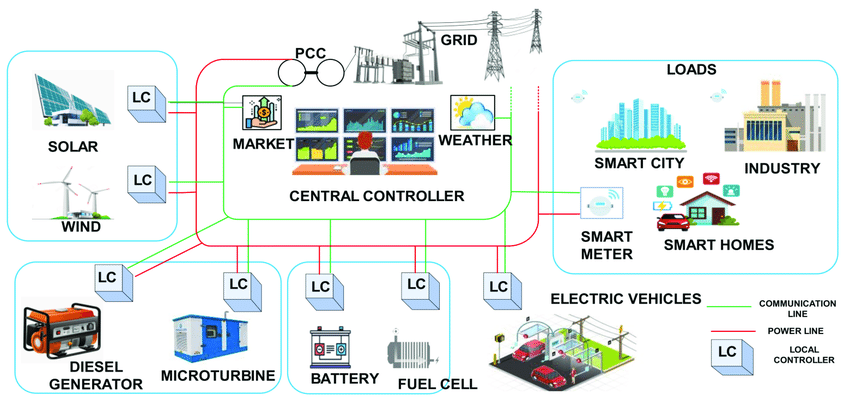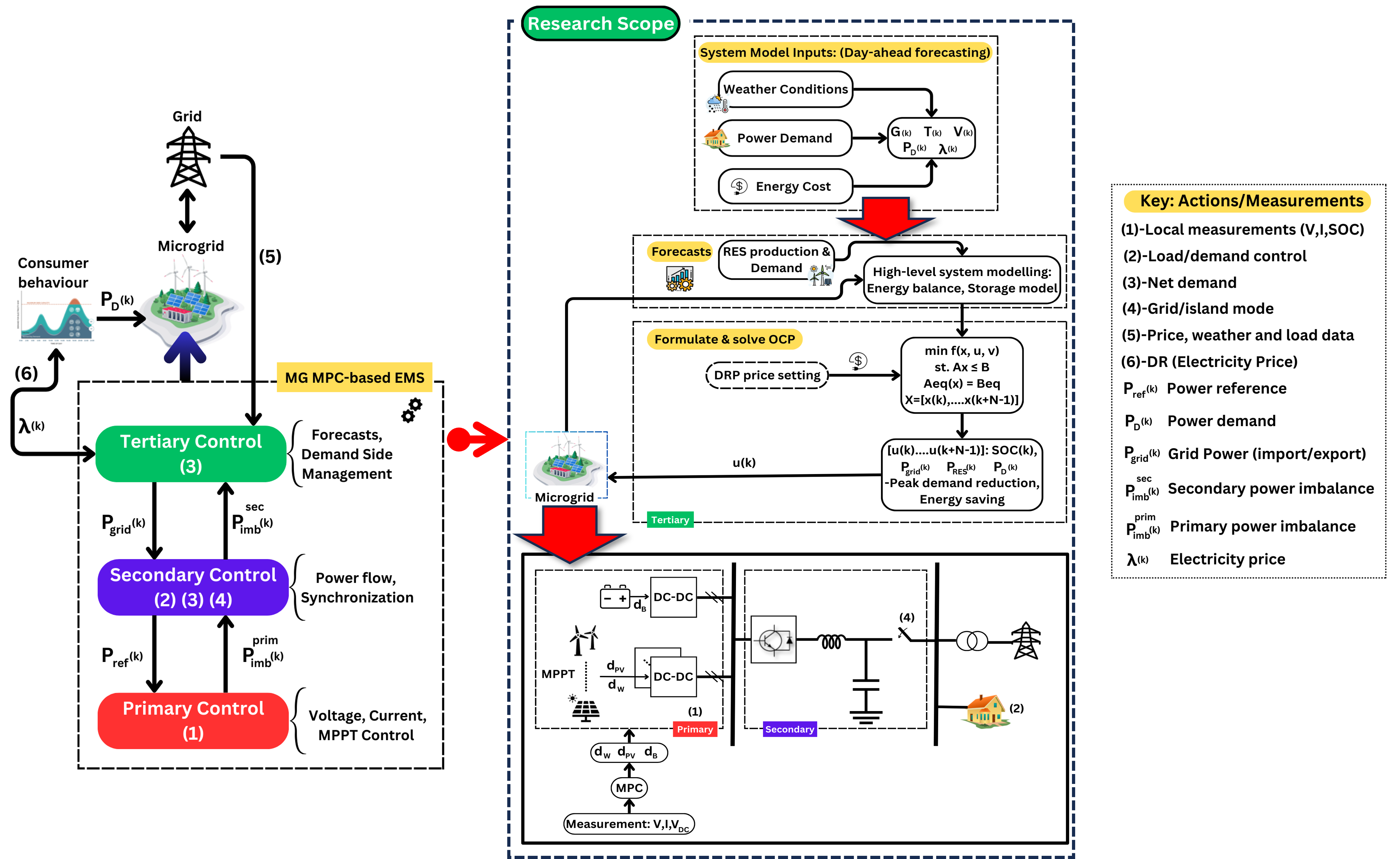Microgrid Overview:
A microgrid composes distributed energy resources and associated loads that function as a single, controllable unit in relation to the grid within precisely defined electrical limits. It can run independently, including in fully off-grid situations, but it often functions in synchrony with the electrical power grid.
Generally, the key components depicted in the figure include:
- Electricity generation resources-Renewable or Conventional (e.g. solar PV arrays, wind energy conversion systems, diesel generators.)
- Energy Storage systems (e.g. batteries, flywheels, pumped storage)
- Control systems: The management of distributed energy resources, balancing of electrical demands, and disconnecting and reconnecting the microgrid from the main grid are typically handled by a central controller found in most microgrid systems.
- Loads (e.g. homes, businesses, institutions that consume electricity).

Overview of a typical microgrid. Adapted from: Battula, A. R., Vuddanti, S., & Salkuti, S. R. (2021). Review of Energy Management System Approaches in Microgrids. Energies 14 (17): 5459.
Resilience Benefits of Microgrids:
Microgrids' capacity to function independently and separate from the main grid during an outage is its greatest resilience advantage. As a result, during an outage, facilities powered by and connected to the microgrid can continue to provide services to the community. Disruptive occurrences can have a less negative societal and economic impact if essential loads, like food stores and medical institutions, can still be served.
Depending on their components, microgrids may also be able to provide additional benefits above and beyond energy resilience benefits:
- By using renewable energy sources, microgrids can minimize GHG emissions, which is good for the environment.
- Occasionally, microgrids may have the ability to sell electricity back to the grid while operating normally.
However, microgrids are just one way to improve the energy resilience of an electric grid, and they do have some potential disadvantages:
- Microgrids may require significant initial capital expenditures, contingent upon their intricacy.
- The operation and maintenance of microgrids call for certain expertise due to their complexity.
- Controls and communication systems used in microgrids pose cybersecurity vulnerabilities.
Considering other resilience investment options, such as weatherizing power generation sources, hardening existing transmission and distribution systems, and constructing additional distribution systems to provide energy supply redundancy, may be beneficial for communities as microgrids are not the only way to improve energy resilience.
Research Introduction:
The demand for more robust, sustainable, and efficient energy systems when new operational difficulties arise is the driving force behind microgrid research. Microgrids provide a promising answer to many of the issues confronting the energy industry today by eliminating the drawbacks of centralized grids and utilizing technological improvements. Significant changes in voltage and power are caused by the dynamic operating circumstances of microgrids. Thus, further research and development are needed to fully utilize microgrids and facilitate the shift to a more dependable and ecologically friendly electricity source in the future. Energy management systems in particular are necessary to reduce the issues for dependable and effective coordination.
Research Highlights:
1. Microgrid Operation (Simulation and Validation):
Here, the dynamic modeling and simulation of an off-grid direct current (DC) microgrid consisting of the photovoltaic (PV) panel, wind turbine, battery, and a DC load incorporating simple-traditional, comprehensible, and well- established primary level-based power control strategies for quality power output has been presented. In addition,a real-time experimental validation of the dynamic simulation model has been achieved by designing and developing an indoor test system architecture. Using a 48-hourly meteorological dataset from Fukuoka, Japan as in the figure below, the validation results showed a reasonable range of Root-mean-square deviation (RMSE), indicating that the simulation model can precisely depict the dynamic operation of a hybrid DC microgrid system.
2. Microgrid Advanced Control:
This branch of microgrid research encompasses the goals of developing robust microgrid control systems at both device level and energy management for grid-tied and off-grid modes highlighting weather and demand uncertainties.

Microgrid Control Hierarchy and Research scope

